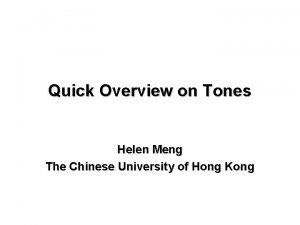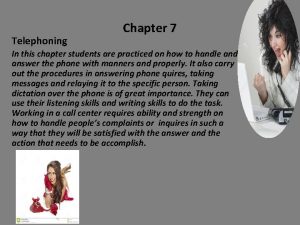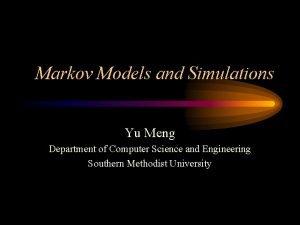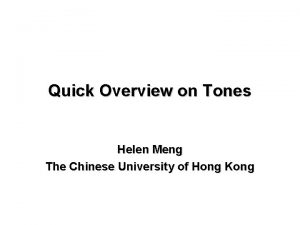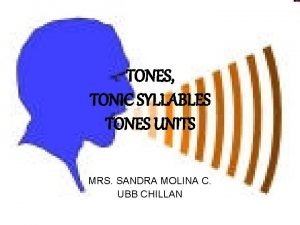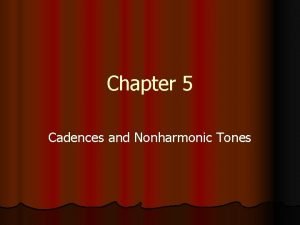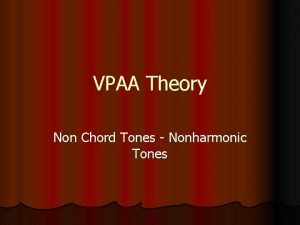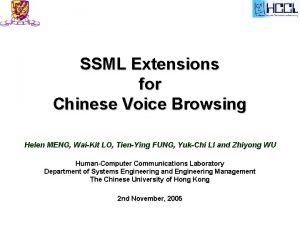Quick Overview on Tones Helen Meng The Chinese









- Slides: 9

Quick Overview on Tones Helen Meng The Chinese University of Hong Kong

Mandarin Tone System • 4 tones + 1 ‘light’ tone level of F 0 time (1). 陰平 /yin ping/, high level e. g. , 媽 (2). 陽平 /yang ping/, low level e. g. , 麻 (3). 上 /shang/, rising e. g. , 馬 (4). 去 /qu/, going e. g. , 罵

Cantonese Tone System • 6 non-entering and 3 entering tones

Phonetic Transcription Schemes • Chinese character sets (“scripts”): simplified, traditional • Pronunciation of a character = tonal syllable = syllable + tone • Different syllable inventory for different dialects, e. g. Mandarin (official), Cantonese (major dialect)… – syllable in Roman alphabets – tone as a one-digit Arabic number – Popular schemes are • pinyin (for Mandarin) 銀行 (bank): /yin 2 hang 2/ • jyutping (for Cantonese) 銀行 (bank): /ngan 4 hong 4/

<tone> element

• Tone Proposed <tone> Element – Vary with meaning, context and speaking style –相 • in tone 2 means photo • in tone 3 means facial appearance / minister • Current SSML 1. 0: phoneme – Requires pronunciation transcription – Example <phoneme alphabet="x-lshk-jyutping" ph="soeng 2">相</phoneme> <phoneme alphabet="x-lshk-jyutping" ph="soeng 3">相</phoneme> • Proposed <tone> element – with the required “value” attribute <tone value="2">相</tone> (photo) <tone value="3">相</tone> (face appearance) – inherit the alphabet attribute, or explicitly specify 6

Examples of Using “tone” Element • Tone changes with meaning – 糖 (candy / sugar) <tone value="2">糖</tone> (tone 2 /tong 2/: means candy) <tone value="4">糖</tone> (tone 4 /tong 4/: means sugar) • Tone changes with context – 爺 (grandfather) 阿<tone value="4">爺</tone> 爺<tone value="2">爺</tone> (tone 4 /je 4/: preceded by 阿) (tone 2 /je 2/: preceded by 爺) • Tone changes with speaking style: – 英文 (English) 英<tone value=“ 4">文</tone> 英<tone value="2">文</tone> (tone 4 /man 4/: formal, read) (tone 2 /man 2/: colloquial) 7

Tone Sandhi (Rules) • For Mandarin: – Tone 3 Tone 2 Tone 3 – Etc. • For Cantonese: – – Tone 4 Tone 2 OR Tone 4 Tone 1 Tone 4 (no change) Etc. 8

END 9
